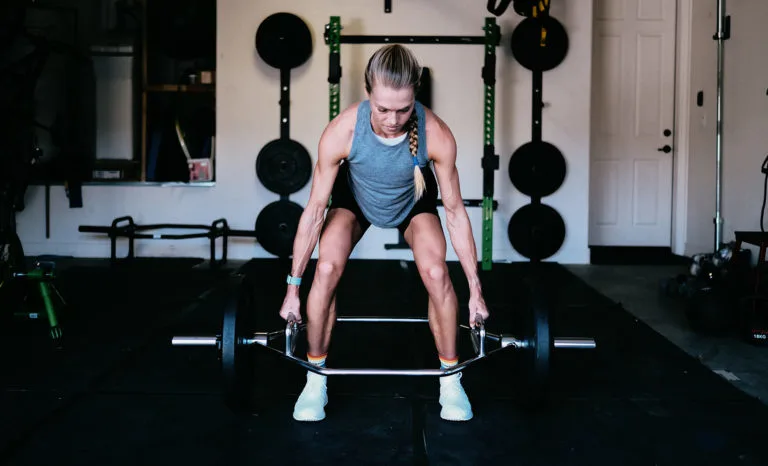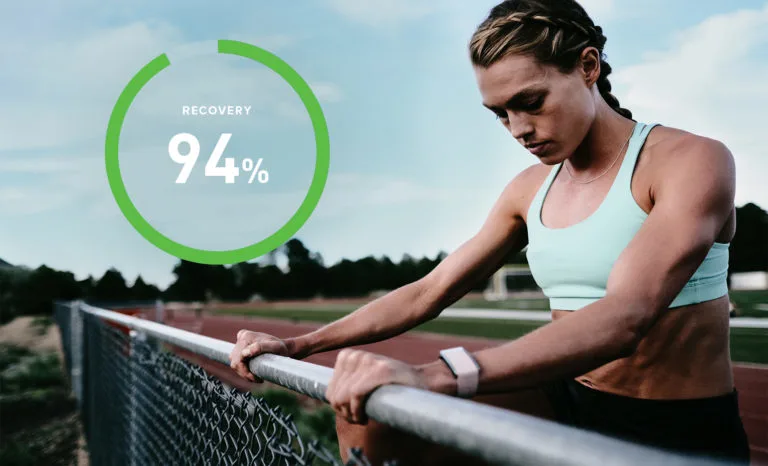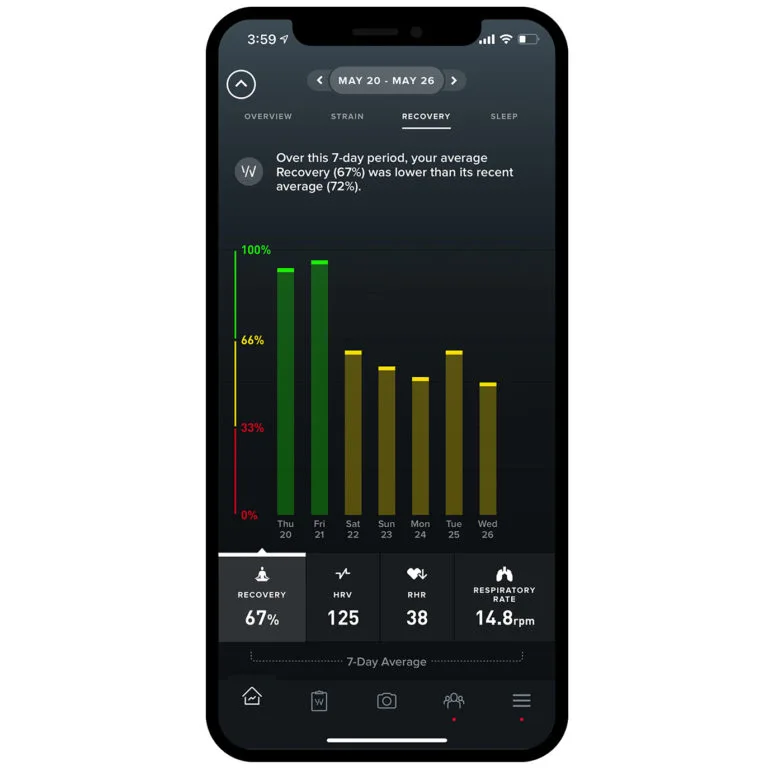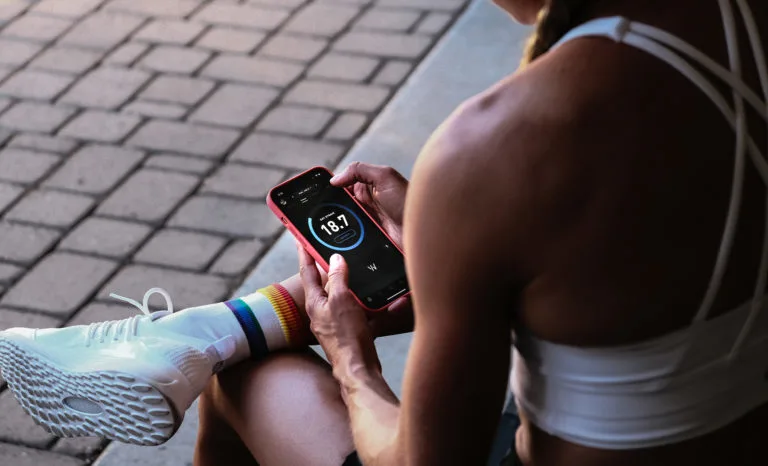Topics
- Article
- Running
5 Tips on How to Run Faster from Olympian Colleen Quiqley

WHOOP is excited to announce its partnership with 2016 Olympian and US Indoor Mile Champion Colleen Quigley.
Olympian and pro runner Colleen Quigley shares her top 5 tips for how to run faster. Colleen holds PRs including a 4:22 mile, 15:10 5k, and 9:11 3000m steeplechase.
“I Never Dreamed of Going to the Olympics”
If you ask Colleen Quiqley when she knew she wanted to be a runner, she’ll tell you she didn’t. Like most kids she tried a variety of sports at a young age, including dance and soccer. Her freshman year of high school she decided to join the cross-country team to stay in shape, but right away it was obvious that running was something she could take a lot further. Two state titles and a “Gatorade Player of the Year” award later, Colleen became one of the top female runners to ever come out of St. Louis, Missouri. She continued her career at Florida State, a top D1 program, and immediately signed with Nike to train with the Bowerman Track Club after graduating. Today, Colleen is paving her own path by forgoing the traditional shoe sponsorship model and encouraging positive change in the sport of track and field. She recently announced Lululemon as her apparel sponsor, which means she can run and train in any shoe she wants--and also work with additional partners like WHOOP to prioritize self-care and become the best athlete she can be.
Colleen Quigley’s Top 5 Tips to Run Faster
1. Incorporate Variety Into Your Training Regimen
When it comes to running faster, variety is key. If you’re doing the same 5-mile loop everyday you’ll maintain your fitness, but it’s unlikely you’ll gain speed. “One of the biggest mistakes you can make is doing the same thing everyday. You get into ruts, and then you don’t feel motivated. Variety is what makes it fun, otherwise it’s boring. Mix it up. It’s better to be a well-rounded athlete and do things that challenge your endurance, strength, and speed, rather than doing the same thing all the time,” says Colleen. “Some people don’t understand why I run an hour and 45 minutes on my long run when my race [on the track] is only 9 minutes long. It’s because I’m building cardio strength, which translates to the track when I’m doing a steeple workout. I can’t close in a race if I don’t have that.”

One of Colleen Quigley's tips to be a better runner is to use a variety of crosstraining methods.
A typical week of running training for Colleen involves the following:
- Anaerobic speed work: Faster, high-intensity reps with longer recovery
- Tempo work: Increased sustained pace at 70-80% max HR
- Hurdle & steeplechase drills: Exercises that improve form and technique
- Long runs: Sustained comfortable pace to build endurance
- Recovery runs: Easy pace to shakeout the legs
- Cardio cross-training (swimming, spin): Supplemental work to improve cardiovascular fitness with low-impact
- Strength training (pilates, lifting): Training the muscles to sustain heavy loads to reduce injury and handle high mileage
Recovery running tips from coach Emma Kirk-Odunubi
2. Fuel Your Body & Develop a Healthy Relationship with Food
At FSU, Colleen majored in dietetics and thought she’d pursue a career in nutrition before running pro became a reality. She grew up in a family that taught her how to have a healthy relationship with food, which allowed her to succeed as a young, growing athlete. “We had a really big garden in our backyard. We had chickens that laid eggs for us, we had this ideal relationship with food where you use whole foods--you chop, sauté, and bake. You make food, you prepare it,” she explains.

A healthy diet helps improve Colleen Quigley's WHOOP recovery after working out.
“I have an appreciation for how cooking food and preparing food makes you feel and the [sense of] community that breeds. When you break bread and share a meal with someone that creates a special bond. And of course you have the performance aspect of that too. I feel better when I eat good food. I have better energy, I can fight inflammation, I feel fueled for workouts, and I recover faster after my workouts, so I’m ready for the next one. Even if you don’t consider yourself an intense athlete, eating good food will make you feel better in everyday life.”
3. Personalize Training to Your Specific Needs
Since declining to renew her 4-year contract with Nike in 2020, Colleen has been vocal about her experience during that period, which had its ups and downs. In the cutthroat world of track and field (especially in the United States, which is the hardest Olympic team to make), it’s easy to forget that athletes are real human beings with complex needs, both physically and emotionally. Producing stellar performances over and over again is not possible without a deep level of personalization to minimize risk of injury and improve speed. Colleen found WHOOP back in September of 2020 as she looked to fine-tune her training during her transition from Nike. “I felt that WHOOP looked at my day as a whole and gave me super specific feedback on how everything was affecting me,” she notes.

A downward trend in her daily WHOOP recovery lets Colleen Quigley know she may want to modulate her training load.
“For someone who’s so competitive like me, I hate feeling like I’m not doing the most I can. The easiest example of this is the second run during the day. When you’re training with a group of 10 women who are all doing 3 or 4 doubles a week, it’s so hard to say ‘I’m not going to do that’, even if I know it’s not best for me. I just know for myself if I run twice a day more than once a week, I can only do that for so long before something’s going to break.” “You need to do what’s best for you, not what’s best for someone else. WHOOP is an objective measure of your personal recovery, wellness, and health and can help you make those smarter decisions.”
4. Use Data to Your Advantage
Trusting your gut only goes so far. While it’s important to pay attention to how you feel, having concrete data to validate your needs (or tell you something you didn’t expect!) makes training so much easier. “WHOOP is a more scientific way to measure things,” Colleen says. “I always feel like I’m second guessing myself, especially with the overtraining. My natural inclination is to tough it out. But when I have something like WHOOP that gives me real data, I have biological markers that tell me I’m tired 4 or 5 days in a row. I’m overreaching, not just for one day, but multiple days on end.” “I can say ‘See, my HRV is really low! I knew I wasn’t recovering well.’ I can give myself some grace.”

checking her STRAIN data in the WHOOP app Helps Colleen Quigley avoid overtraining.
Colleen also uses the WHOOP Journal to monitor recovery modalities including supplements, using her Hypervolt, compression boots, meditation, and more. She credits the journal to holding her accountable for behaviors she knows she should be doing. “When I see the pop-up [in the app], it’s like this little reminder that holds me accountable.”
5. Whatever You Do, Focus on Consistency and Don’t Quit
According to Colleen, if you hate running, you’re scared of it, or you think you’re not good enough, it’s all about reframing your mindset. Culture tends to view running as a punishment. If you lose, you have to run. It’s extremely tough on the body, which means pain is inevitable and there’s an intense psychological barrier. Even for elite athletes, getting back in shape is hard work. “You do have to get in shape before it becomes fun. That means working through some of the beginning awkwardness, feeling heavy in your legs and tired, like you don’t know what you’re doing. You have to just push through that for a while before you feel that runner’s high,” she says. “I always tell people don’t lose heart if at first it’s not what you imagined. It doesn’t mean you’re a bad runner, it just means you haven’t done it enough yet. You just have to stick with it.”